What Are the Unique Physical Characteristics of Chinchillas?
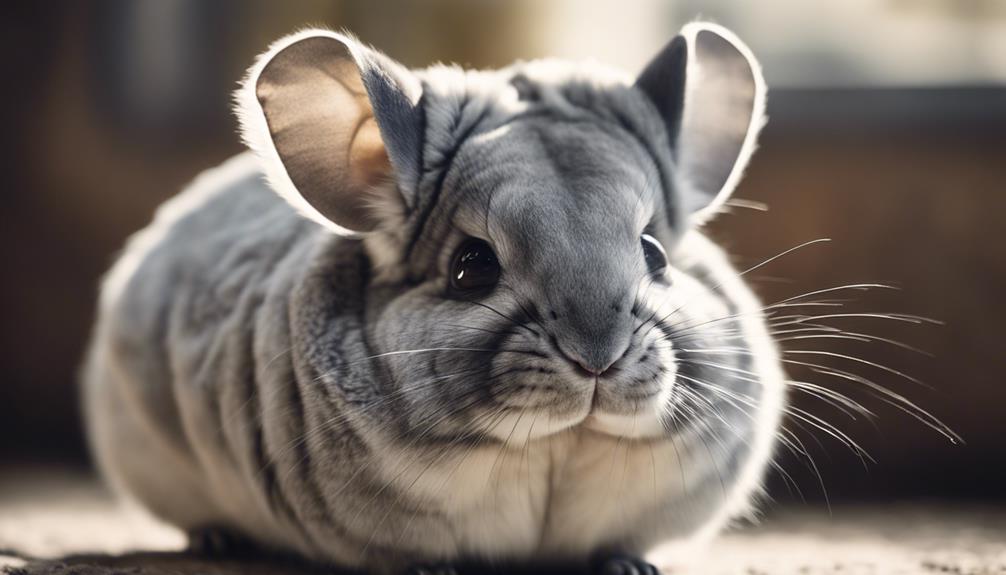
Unique Physical Characteristics of Chinchillas:
Soft fur resembling fluffy clouds, intricate ears, deep eyes, long tail, precise teeth alignment, agile feet, and sensitive whiskers set them apart in the animal kingdom.
Each detail serves a purpose, reflecting fascinating adaptations.
Ears
With their large, expressive ears capable of moving independently, chinchillas possess a unique and fascinating feature that aids in their survival and communication. These ears play a crucial role in the chinchilla's exceptional hearing abilities, allowing them to detect even the slightest sounds in their environment. Chinchillas have an acute sense of hearing, which helps them avoid predators and navigate their surroundings effectively.
In terms of ear cleaning techniques, chinchillas are meticulous groomers. They use their front paws to clean their ears regularly, ensuring that dirt and debris are removed to maintain optimal hearing. The chinchilla's ears are delicate and sensitive, making it essential for them to keep these organs clean to prevent infections and maintain their sharp hearing abilities.
Eyes
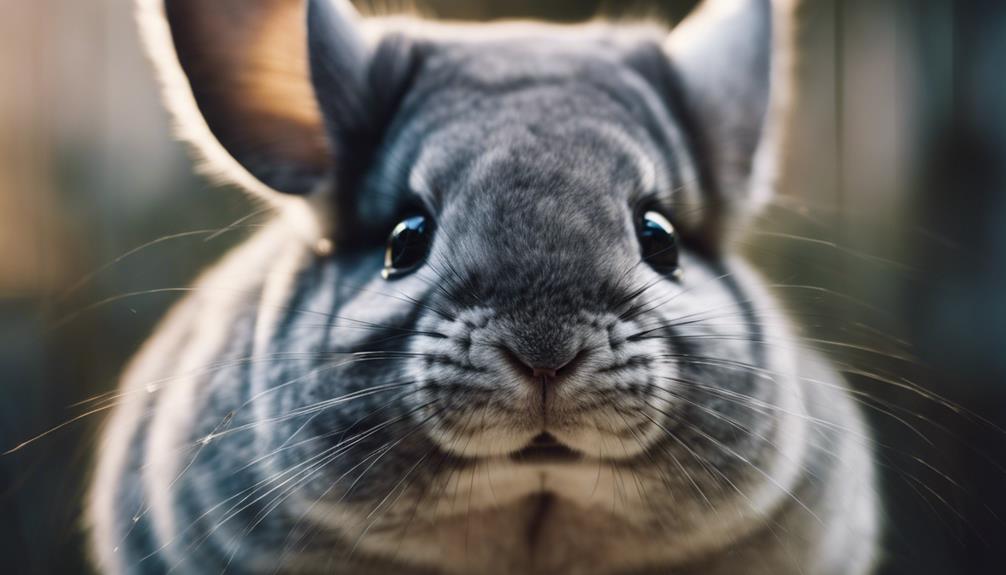
Nestled between their soft fur, chinchillas possess eyes that are large, dark, and strikingly expressive. Their eyes play a crucial role in their survival in the wild, allowing them to detect predators and navigate their surroundings efficiently. Chinchillas have excellent vision, which aids them in their natural habitat of the Andes Mountains. These small rodents have unique eye characteristics that contribute to their overall charm and functionality.
| Eye Health and Vision | Eye Color | Blinking |
|---|---|---|
| Chinchillas generally have good eye health, but it's essential to monitor for any signs of irritation or infection. Regular check-ups with a vet can ensure optimal eye function. | Their eyes are typically dark, ranging from black to dark brown. This dark coloration helps protect their eyes from the bright sunlight in their natural habitat. | Chinchillas blink their eyes frequently to keep them moist and clean. Blinking also helps remove any dust or debris that may have settled on their eyes. |
Understanding the unique characteristics of chinchilla eyes can help owners ensure their pets' well-being and happiness. By observing their eyes closely and providing proper care, chinchilla owners can help maintain their furry companions' visual health.
Tail
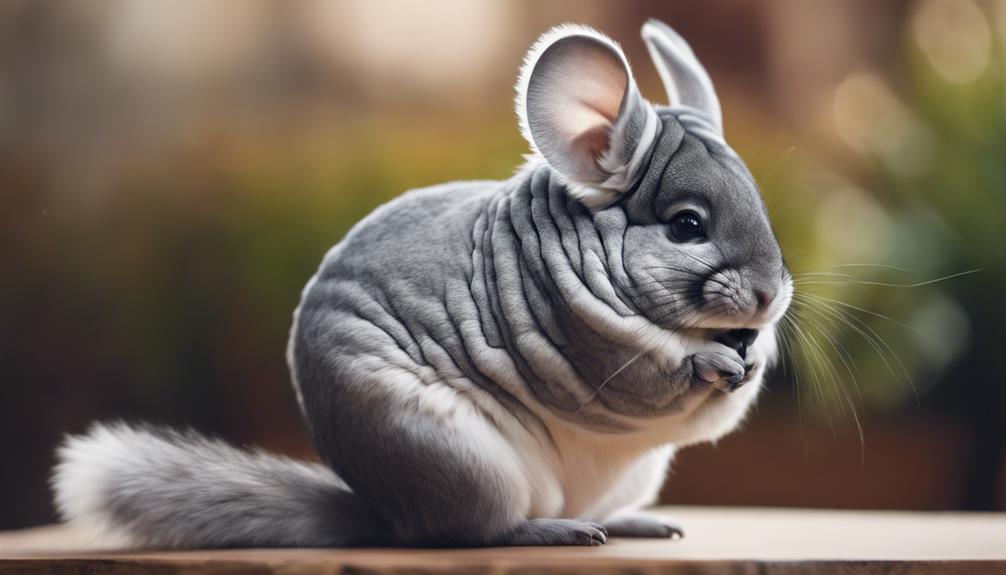
Chinchillas' tails are distinctive features that serve various functions in their daily activities and interactions with their environment. These small rodents have tails that play crucial roles beyond just aesthetics:
- Tail length: Chinchillas have long, bushy tails that can grow up to six inches in length. This length helps them maintain balance and agility as they move swiftly through their rocky habitats.
- Tail coloration: The tail of a chinchilla typically matches the color of its body fur, adding to its overall sleek appearance and camouflage abilities in the wild.
- Tail communication: Chinchillas use their tails to communicate with each other. They may flick or twitch their tails to express emotions like excitement, fear, or irritation to other chinchillas.
- Tail balance: The tail acts as a counterbalance when chinchillas jump or make sudden movements, aiding in their coordination and preventing falls while navigating their surroundings.
Teeth
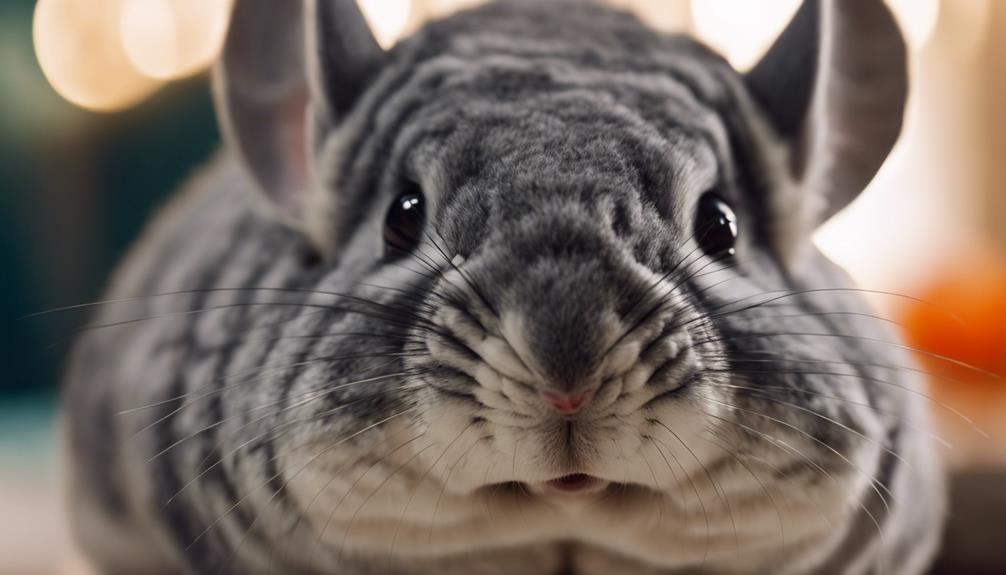
The incisors of chinchillas are essential tools for their survival, constantly growing and aiding in their feeding habits and overall well-being. Chinchillas are known for their open-rooted teeth, a feature that allows their incisors to grow continuously throughout their lives. This unique dental structure is crucial for their chewing habits, which primarily consist of roughage like hay and grasses. By constantly gnawing on fibrous materials, chinchillas wear down their teeth naturally, preventing overgrowth that could lead to dental health issues.
Maintaining proper dental care is vital for chinchillas to avoid dental problems such as malocclusion, where the teeth don't align correctly, causing discomfort and difficulty eating. Owners can support their chinchillas' dental health by providing a balanced diet rich in hay, ensuring access to wooden chew toys to help wear down teeth, and scheduling regular check-ups with a veterinarian familiar with chinchilla care. By understanding the importance of dental care and monitoring their chewing habits, chinchilla owners can help ensure the well-being of these adorable rodents.
Feet
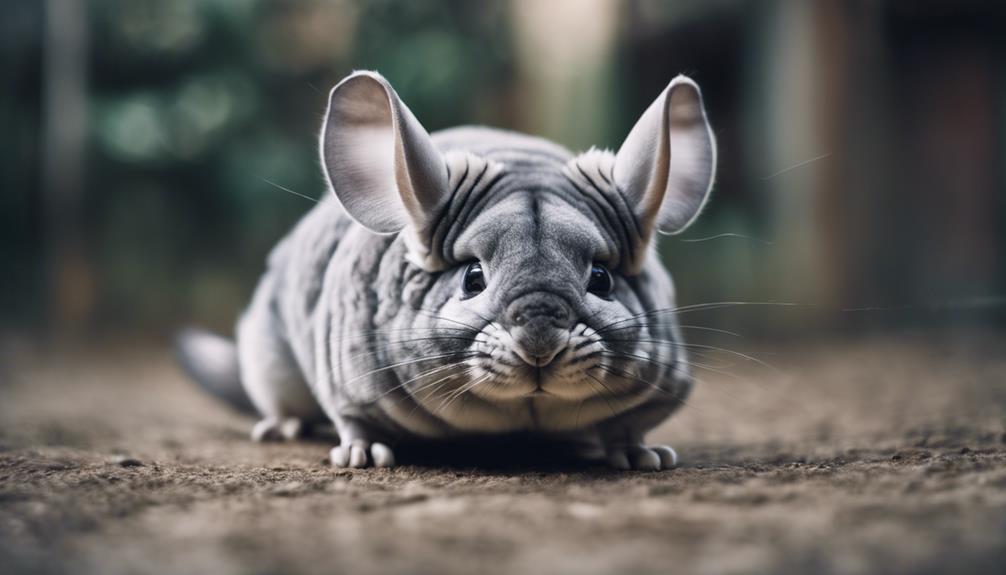
With their unique physiology adapted to their natural habitat, chinchillas possess remarkable features in their feet that facilitate their agile movements and survival in the wild. These small creatures have specialized adaptations in their feet that aid in their daily activities and overall well-being:
- Paw pads: Chinchillas have soft paw pads that provide traction and grip on various surfaces, allowing them to navigate rocky terrains and tree branches with ease.
- Grooming: Chinchillas meticulously groom their paw pads to keep them clean and free from debris, ensuring optimal function and hygiene.
- Toe structure: Their feet are equipped with four toes on their front paws and three on their hind paws, giving them stability and balance during intricate movements.
- Mobility: The flexibility and dexterity of their toe structure enable chinchillas to jump, climb, and run swiftly, essential skills for escaping predators and foraging for food in their natural habitat.
Whiskers
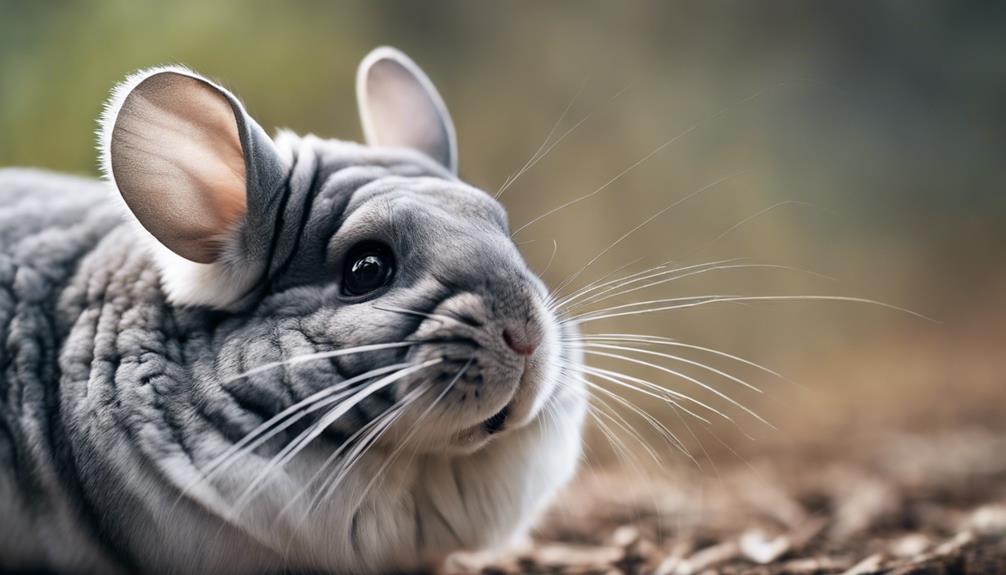
Chinchillas rely heavily on their whiskers for navigating their environment with precision. These sensitive hairs help them detect changes in air currents and sense objects around them in low light conditions.
Additionally, chinchillas possess the remarkable ability to regrow their whiskers if they're damaged or broken.
Whisker Sensitivity
Sensitive to touch and vibrations, the whiskers of chinchillas play a crucial role in their sensory perception. These specialized hairs aren't just for whisker grooming and sensory function but are also instrumental in whisker trimming and tactile communication.
Here are some key points about the whisker sensitivity of chinchillas:
- Whiskers help chinchillas navigate their environment by detecting changes in air currents.
- Chinchillas use their whiskers to determine the size and shape of objects, aiding in their spatial awareness.
- The whiskers are so sensitive that they can even pick up on subtle vibrations, alerting chinchillas to potential dangers.
- Whisker sensitivity allows chinchillas to communicate with each other and interpret social cues through touch.
Whisker Regrowth
Having discussed the significance of whisker sensitivity in chinchillas, the process of whisker regrowth in these rodents is a remarkable aspect of their adaptive biology.
Chinchillas undergo regular whisker shedding, which is a natural phenomenon necessary for maintaining optimal sensory functions. Whisker shedding can occur due to various reasons such as stress or age, but chinchillas have a unique ability to regrow these specialized hairs efficiently.
Whisker regrowth is a vital process that ensures chinchillas can navigate their surroundings effectively, relying on these sensitive tactile structures. Through meticulous whisker grooming behavior, chinchillas keep their whiskers clean and well-maintained, contributing to their overall sensory acuity.
Understanding the intricate mechanisms of whisker shedding and regrowth provides insights into the fascinating biology of these small, furry creatures.
Frequently Asked Questions
Do Chinchillas Have a Strong Sense of Smell?
Chinchillas have a strong sense of smell, essential for olfactory communication and scent marking. Their smell sensitivity and scent recognition capabilities are remarkable, aiding in navigation and social interactions within their environment.
How Do Chinchillas Communicate With Each Other?
Chinchillas communicate through vocal signals and body language, much like a dance of words. They also use scent marking and grooming to convey messages. Their intricate ways of interaction showcase their social and intelligent nature.
Can Chinchillas Swim?
Chinchillas cannot swim. Water safety is crucial for them as they lack aquatic abilities. Their dense fur can become waterlogged, leading to potential drowning. Chinchillas should always be kept away from water to ensure their well-being.
What Is the Average Lifespan of a Chinchilla?
Chinchillas have an average lifespan of around 10 to 15 years. Proper chinchilla care, including a balanced diet, exercise, and regular veterinary check-ups, can help ensure they live a long and healthy life.
How Do Chinchillas Protect Themselves in the Wild?
In the wild, chinchillas use their predatory instincts to hide from threats by blending into their surroundings with their excellent camouflage. They also exhibit territorial behavior, marking their territory with scent glands to deter predators and competitors.











